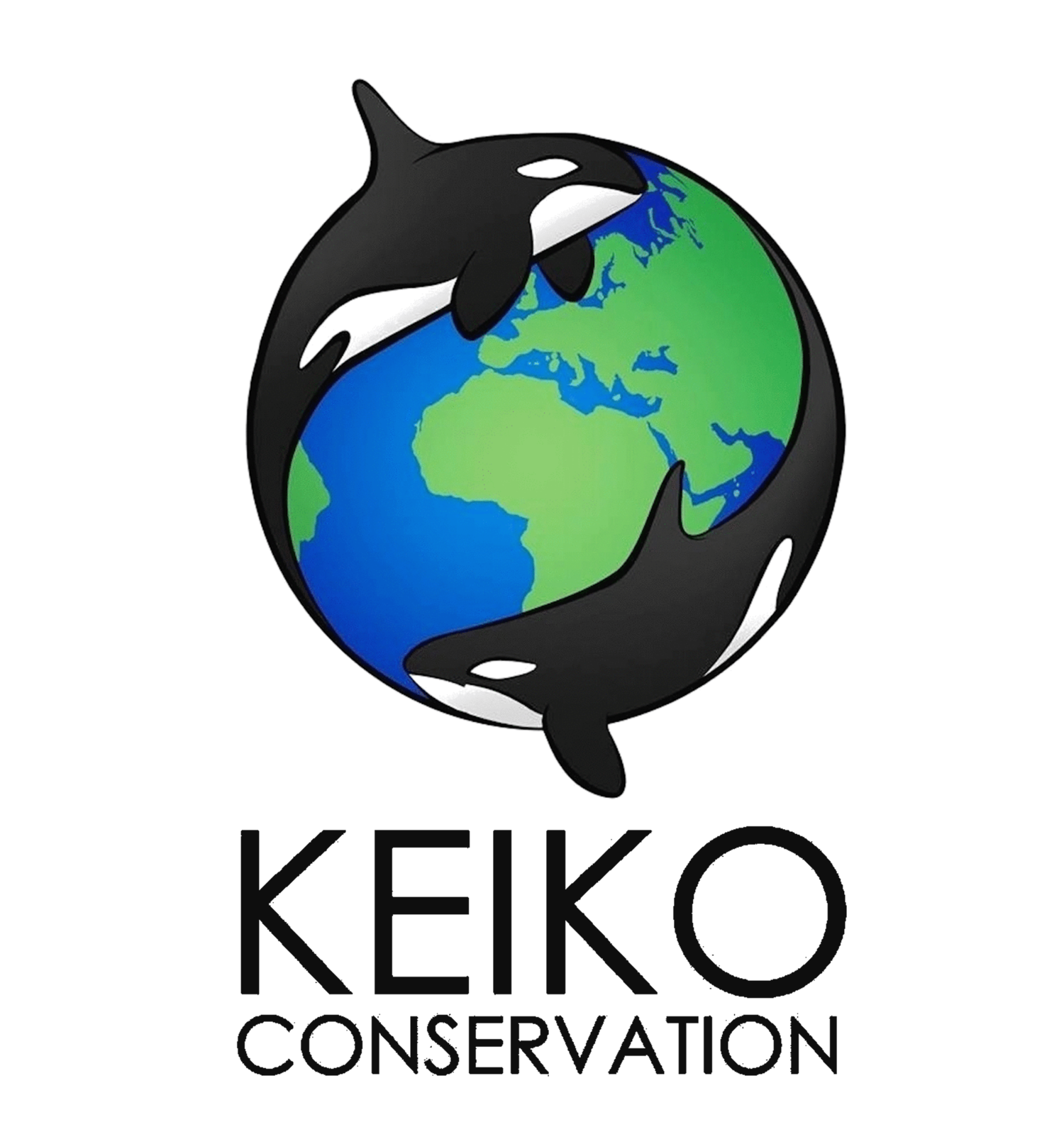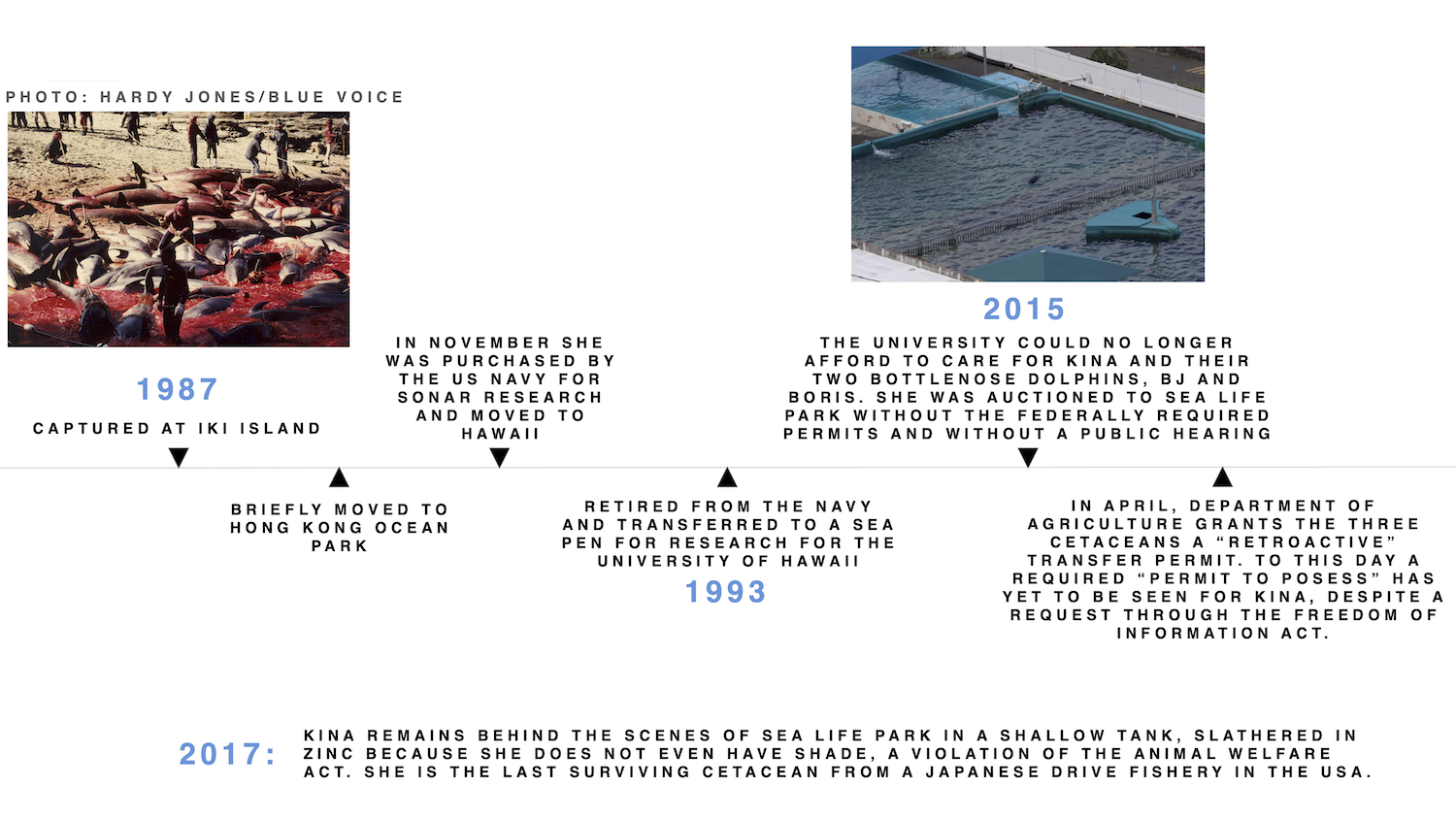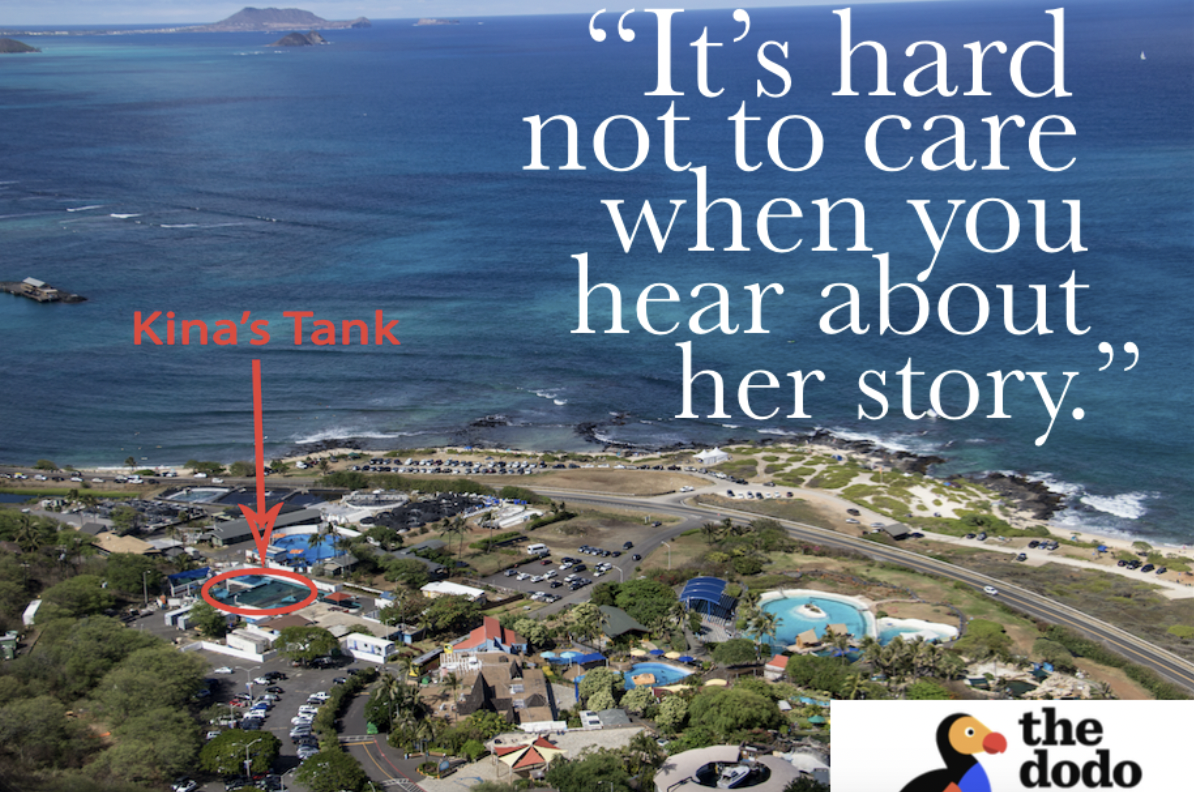Kina Dies At Sea Life Park
Photo: Kyler Badten/Keiko Conservation of Kina at Sea Life Park
FOR IMMEDIATE RELEASE
KEIKO CONSERVATION
info@keikoconservation.com
WAIMANALO, HAWAI’I, October 15th, 2019- We are devastated to share the news that Kina, the false killer whale hidden away at Sea Life Park, has died. A necropsy has not yet been performed.
Kina was the last surviving cetacean in the USA acquired from one of the controversial Japanese drive fisheries.
In 1987, her pod, likely consisting of generations of family members, was herded into a shallow area around Iki Island in Japan. She was amongst a few individuals selected to sell off to dolphinariums. The rest of her family were deemed "pests" by fishermen and slaughtered.
After six months of waiting at a marine park in Hong Kong, she was flown to Hawai’i and put to work by the US Navy for the following six years. Afterward, she was transferred to the Hawai’i Institute Of Marine Biology at Coconut Island where she spent her days being used for research in the company of two bottlenose dolphins in a sea pen. That is until, after 23 years, she was dubbed too expensive to continue caring for and auctioned off to the highest bidder, Sea Life Park.
In August of 2015, she was illegally moved out of the sea pen to Sea Life Park. The park and the university neglected to get the federally required permits for the transfer and completely disregarded Hawai'i residents' legal right to testify at a public hearing to determine whether or not those permits were approved. There was a significant amount of public outrage towards the Hawai'i Department Of Agriculture (HDOA) for neglecting to enforce or remedy this illegal move and 8 months later the HDOA quietly granted her a “retroactive” transfer permit.
After the move, Kina was put in quarantine and held in isolation in a small concrete tank behind the scenes of the park, without even shade from the sun and almost no stimuli. They slowly introduced some of the park’s other captive dolphins to her, but she remained off display and hidden from the public in the small tank. In the wild, false killer whales are incredibly social, they have long term bonds with other individuals, and they share their meals. They’ve even been documented attempting to share their meals with humans when coming across divers. They typically spend their days in deep pelagic waters and can dive for up to 18 minutes as far as 500 meters deep. The move from a sea pen to isolation for an extremely intelligent, deep diving, social animal was irrefutably cruel. It only takes basic knowledge of false killer whales to understand that subjecting them to the quality of life they would receive in a concrete tank is grossly inadequate and unethical.
For 4 years, a zinc-lathered Kina floated mostly motionless in her small tank in the glaring sun until her death.
Kina is the 141st cetacean to die at Sea Life Park.
Sea Life Park is currently trying to get a $30 million renovation approved. Instead of focusing on the elements of their park that are falling apart or the small barren tanks they have for their dolphins, they’ve chosen to spend the money on the appearance of their park, including a new gift shop, indoor aquarium, updated concierge, and entry signage.
Please encourage the Department of Planning and Permitting to deny their request by e-mailing lila.youn@honolulu.gov. They are accepting public comment until October 23rd, 2019.
ADDITIONAL RESOURCES:
WAYS TO HELP THE REMAINING CETACEANS AT SEA LIFE PARK
Leave reviews on Trip Advisor, Yelp, and Google Reviews discouraging Hawai’i visitors from going to Sea Life Park.
Sign our petition asking tour companies and advertisers in Hawai’i to stop promoting these facilities to visitors!





